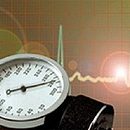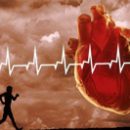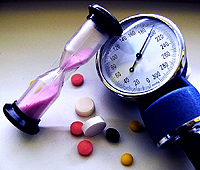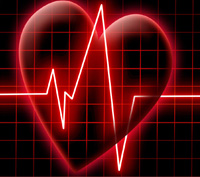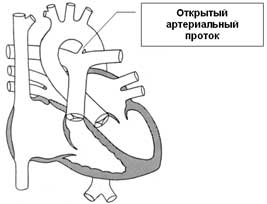Hypertrophic cardiomyopathy is an independent thickening of the walls of the ventricles, which is accompanied by a decrease in the volume of the cavities of the heart. As a result of the disease, the walls of the ventricles become severe and dense, not capable of full relaxation.
Content
The concept of hypertrophic cardiomyopathy
Hypertrophic cardiomyopathy - a disease characterized by independent, not dependent cardiovascular system with significant thickening (hypertrophy) of ventricular walls with a simultaneous decrease in their internal volume. In the event that myocardial hypertrophy prevents normal blood outflow from the ventricles of the heart, it is obstructive form of hypertrophic cardiomyopathy. In all other cases, hypertrophic cardiomyopathy is considered to be unstructive. In the overwhelming majority of cases, there is a lesion of the left ventricle of the heart.
Causes of disease development
The disease may be congenital and acquired. Congenital hypertrophic cardiomyopathy is inherited and often bears family character. The reasons for the development of acquired hypertrophic cardiomyopathy are not completely clear. According to one of the hypotheses, in persons with acquired hypertrophic cardiomyopathy in the intrauterine period of their life, the defect of the so-called adrenergic heart receptors was formed, which carried out the regulation of cardiac activity, in particular, the frequency of heart abbreviations. In the blood of any person are constantly circulating norepinephrine and other student heart rhythm natural chemicals (hormones). In persons with defective receptors, sensitivity to noraderennylin is significantly increased and hormones similar to it, which contributes to the development of myocardial hypertrophy, and with the time of hypertrophic cardiomyopathy.
Main mechanisms for the development of hypertrophic cardiomyopathy
Due to the pronounced hypertrophy of myocardial walls of the ventricle, normal filling of the ventricle is broken. As a result, less than in healthy people, the amount of blood comes into the ventricle. At the same time, the expressed stiffness of myocardium causes a persistent increase in intraventricular pressure. And expressed myocardial rigidity, and increased intraventricular pressure leads to the fact that a smaller amount of blood is thrown out of the ventricle at the moment of heart abbreviation. At the beginning of the disease, these changes do not show themselves. Gradually, at first, with significant, and then with smaller physical exertion, the disease declares itself.
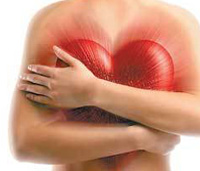 Normally, for the implementation of any loads, blood discharge from the heart should increase, which is necessary for adequate delivery of oxygen by organs and tissues of the body. For this, under load, the heart rate increases the frequency. With hypertrophic cardiomyopathy, filling the blood of the heart suffers and alone, and during the load, it deteriorates even more due to an increase in heart rate frequency. Thus, an adequate increase in the pump function of the heart during the execution of the load does not occur. Physical exertion in hypertrophic cardiomyopathy leads to a significant increase in intraventricular pressure, which in turn causes an increase in pressure in the supervised left atrium and the vessels of a small (pulmonary) circle of blood circulation. As a result of all these changes, shortness of breath occurs, increasing proportion to the degree of load. Since during the physical exertion, blood release from the left ventricle is not adequate to the load gain, one of the first begin to suffer the bloodstream in coronary arteries, blood supply to the heart muscle itself.
Normally, for the implementation of any loads, blood discharge from the heart should increase, which is necessary for adequate delivery of oxygen by organs and tissues of the body. For this, under load, the heart rate increases the frequency. With hypertrophic cardiomyopathy, filling the blood of the heart suffers and alone, and during the load, it deteriorates even more due to an increase in heart rate frequency. Thus, an adequate increase in the pump function of the heart during the execution of the load does not occur. Physical exertion in hypertrophic cardiomyopathy leads to a significant increase in intraventricular pressure, which in turn causes an increase in pressure in the supervised left atrium and the vessels of a small (pulmonary) circle of blood circulation. As a result of all these changes, shortness of breath occurs, increasing proportion to the degree of load. Since during the physical exertion, blood release from the left ventricle is not adequate to the load gain, one of the first begin to suffer the bloodstream in coronary arteries, blood supply to the heart muscle itself.
In addition, with hypertrophic cardiomyopathy, there is always a discrepancy between the capabilities of the coronary blood supply, remaining the same as in healthy people, and a significant mass of myocardium. Reducing the blood flow through coronary arteries is manifested by angina - a characteristic pain in the middle and in the left half of the chest. Like shortness of breath, angina is provoked by the load and passes alone. In some cases, under load, the blood supply to the brain is also worse, which is manifested by fainting. It should be noted that for some time to overcome the growth of intraventricular pressure during the load, «Connect» Next compensatory mechanism: the left atrium cavity expands, and its wall thickness increases. Such changes contribute to the additional filling of the left ventricle with blood under load. But due to the fact that the reserve of the left atrium as «Pump» Minor, soon refuses this additional mechanism. A significant expansion of the left atrium cavity predisposes to the development of flickering arrhythmia. In addition to flickering arrhythmias for most cases of hypertrophic cardiomyopathy, other various violations of the heart rhythm (arrhythmias) are characterized, which often wear life-like. Arrhythmia is most often provoked by physical or emotional load and may be accompanied by fainting, and sometimes lead to sudden death. In the cavities of the heart, due to their rejected extensibility, clomes can be formed. The spread of fragments of these blood flow thrombus (thromboembolism) can cause infarction of internal organs and blocking large vessels.
Symptoms of the disease
The presence and time (timing) of the appearance of complaints in hypertrophic cardiomyopathy is mainly determined by two factors: which of the ventricles of the heart is changed as a result of the disease. Hypertrophy of the left ventricle, which is the most powerful chamber of the heart, can remain unnoticed for years and decades. Only when the left ventricle starts «hand over» complaints will appear. Isolated defeat of the right ventricle of the heart occurs extremely rarely (most often noted hypertrophy of the interventricular partition - a common wall for both ventricles). In the unstructive form of hypetrophic cardiomyopathy, when the outflow of blood from the ventricle does not interfere, complaints may not be. Sometimes the shortness of breath (when performing significant physical exertion), interruptions in the work of the heart, as well as neurotic heartbeat. The presence of obstruction (obstacles) of blood outflow from the ventricle significantly reduces blood discharge from the heart during physical exertion. In the obstructive form of hyperthytreic cardiomyopathy typical complaints are: shortness of breath when performing physical exertion, angina and trimming states. The appearance of complaints in patients with obstructive form is the reason for their appeal to the doctor. Complaints for hypertrophic cardiomyopathy since its appearance progress slowly, which is a characteristic feature of the disease.

